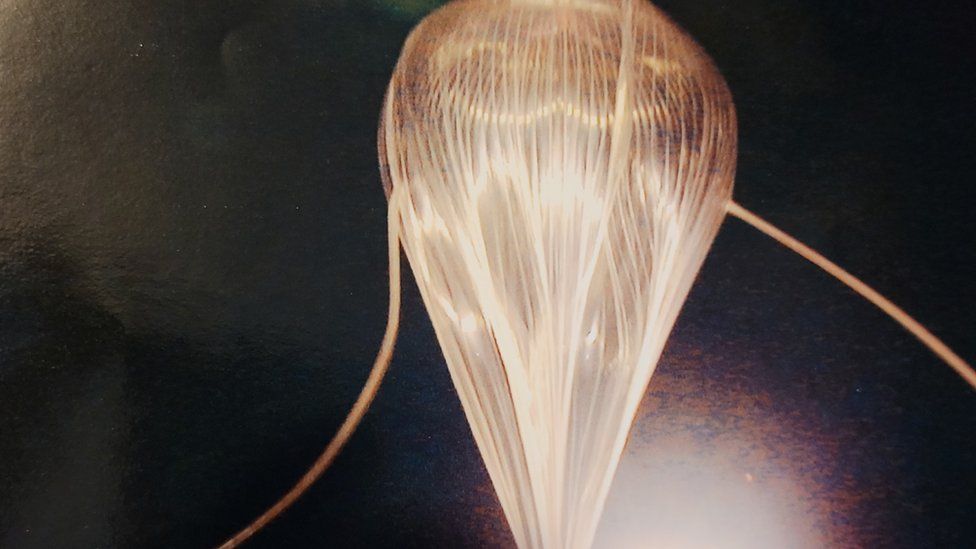When a Canadian weather balloon went rogue
- Published

Twenty-five years later, Dale Sommerfeldt can laugh about the rogue weather balloon that resisted the firepower of air forces from three nations trying to bring it down.
But he admits at the time it was a headache for those involved.
In 1998, a technical malfunction meant the research balloon had failed to come down as planned, in two or three days' time.
Instead, it began to drift across Canada towards the Atlantic Ocean.
Mr Sommerfeldt, who works for the Canadian engineering firm Scientific Instrumentation Ltd, which built the instrumentation for the balloon, said it had been meant for "strictly scientific research" related to ozone.
The Canadian balloon was a different style from the Chinese balloon shot down over the weekend by the US, he added, noting that "those are intended to stay up for weeks or even a month at a time."
It was a massive thing - the size of a 25-storey building that would cover an area equivalent to five football pitches if deflated, according to a BBC report from the time.
The helium-filled balloon was launched from the province of Saskatchewan in late August of 1998, to conduct research for the Canadian Space Agency, Environment Canada and the University of Denver in the US.
But the researchers quickly realised something had gone wrong. A valve that would allow the balloon to naturally release gas and deflate over time had ended up covered by a piece of plastic.
It was not long before they had lost control of it.
"The termination device failed and the backup system failed and that's why the balloon is where it is right now,″ Mr Sommerfeldt told the Associated Press news agency in 1998.
On Monday he told the BBC: "It was just subject to whatever the winds were."
An attempt to bring it down was made off the coast of Newfoundland and Labrador, but to no avail.
"We asked the Canadian military if they would consider shooting it down, sending somebody out for target practice," Mr Sommerfeldt said.
A fighter jet had a ceiling of about 60,000 feet, he recalled and "the balloon, of course, was a lot higher than that".
Hoping to save the research, he asked them to shoot upwards and aim for the suspension point, where the release mechanism was for the package of scientific instruments, which were attached to a parachute.
According to news reports from the time, the Canadian CF-18s fired more than 1,000 rounds of ammunition at the balloon - the pilots refrained from using air-to-air missiles.
The volleys of ammo did not work.
"It wasn't enough to shake loose the release mechanism. They probably hit the balloon too. But those small bullet holes and a balloon that size would have almost no effect," Mr Sommerfeldt said.
It was also shadowed by British and US fighter jets. The rogue balloon continued on towards Iceland before drifting into Russian airspace.
It then drifted back towards Norway before finally landing on Finland's Mariehamn Island after what the Tribune News Service dubbed a "nine-day odyssey".
The instrumentation was sent back to Canada and reused (though there were some bullet holes on the instrument package and its parachute). Mr Sommerfeldt said.
There was, he added, a slap on the wrist from Nav Canada, the country's air traffic regulator, which had to reroute transatlantic flights around the balloon route.
"It's a while ago, so I'm kind of past it now," he said. "But I suspect it was a bit stressful at the time."
Related Topics
- Published6 February 2023
- Published6 February 2023